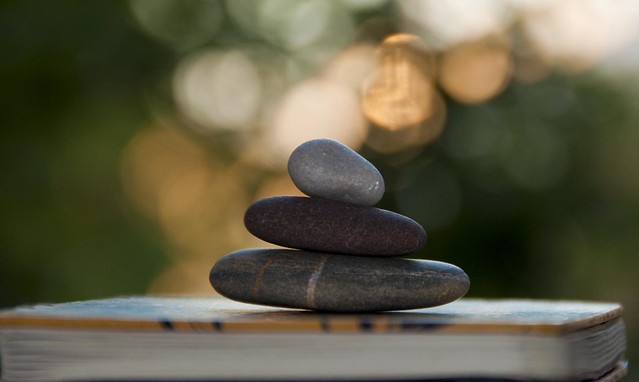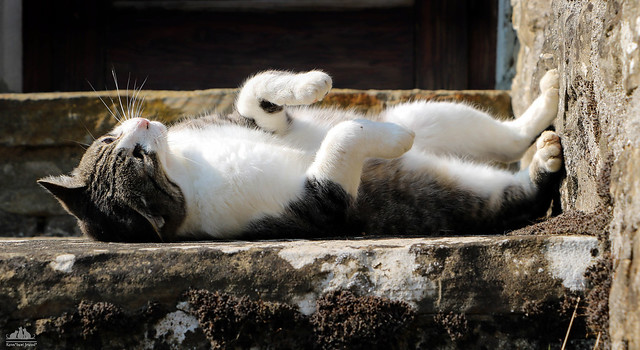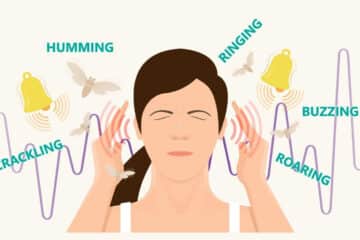Relaxation: a vital component of meditation
In modern approaches to (western) meditation, several important factors have not been incorporated into the practice.
One such example is the importance given to ethics in every meditation tradition. Mentioning this in a mindfulness class is sure to embarrass the teacher.
The other important factor that is overlooked is the relaxation of the body. I argue that incorporating this single practice will significantly improve your meditations.
What do I mean by relaxation?
In this article, I use the word relaxation in a strictly physical sense. It means the relaxation of all physical tension that is stored in the body.
Obviously, we need to have some muscle tension to keep our posture (unless we lie down). That is not what I am talking about. I mean all the extraneous tension that is all over the body.
The link with ‘letting go’
In my article on the attitudes to cultivate in mindfulness, the seventh one is called ‘letting go.’
Letting go invites us to stop being bothered with all the small things in life over which we do not really have control.
Very often, when talking about letting go, the serenity prayer is cited:
Grant to us the serenity of mind to accept that which cannot be changed
Courage to change that which can be changed
And wisdom to know the one from the other
Reinhold Niebuhr
But when it is explained like this, it is mostly something in the meditator’s mind.
However, if you look very closely, you will see that when we hold on to something in the mind, we also hold on to it in the body.
In my experience, whenever people have stress of some sort, the body tenses.
Surprisingly, the reverse also holds to some extent: when we relax tense body parts, the stress in the mind also disappears.
Side note: this is exactly the principle that Hale Dwosin uses in his ‘Sedona Method. Here, stressors are discovered through various introspection techniques. Once found, we are directed to look at them and the physical stress that is associated. Through a series of questions, we are then guided to let go of both the physical and mental tension.
However, in my experience of the technique, it is the physical that comes first and the mental follows. Obviously, I’m no expert on this technique, so I could be wrong.
Luckily for us, the physical tension is easily released once you get a little training (see here for exercises).
Why relaxation is so important
Actually, the real question to be asked is why it is not emphasized in meditative training if it is so important.
According to Alan Wallace, the answer is that meditation was mainly taught to people who did not have a life stat is as stressful as our western life.
They come from rural parts of the country where a yearly festival is the most exciting thing happening. Not the 24/7 bombardment of the senses with posts from social media.
Furthermore, meditation has traditionally been something that was usually only given to people that had some prior training. Both Buddhism and Hinduism start with training in ethics. Having established this level in one’s life would already result in some relaxation.
Relaxation in different meditative traditions
Nearly all meditation instruction entail some sort of relaxation. However, in the modern mindfulness tradition (or in the west in general) it is seldom emphasized.
This is because mindfulness meditation is more geared toward vipassana.
Clarification: there are two main categories of meditation: shamatha and vipassana. The first is aimed at mental stability, whereas the second is aimed at getting to know ones mind in great detail.
Sometimes it is good to have restlessness in our vipassana meditation since it allows us to study this part of our psyche. Furthermore, it allows us to come to terms with this part of ourselves.
However, strictly stabilizing mediations (like pure breath meditations) require a greater degree of stillness. This stillness can later be used to study the mind in even greater detail. So the two methods go hand in hand.
So it is no surprise that people teaching shamatha like Culadasa and Alan Wallace greatly emphasize it.
Alan Wallace has his three pillars of stabilizing meditation: first is relaxation, second is stability, and third is clarity. All three are to go hand in hand to read the pinnacle of stabilizing meditation. He even advises doing the practice lying down to attain even greater degrees of muscle relaxation.
When you go for the TWIM technique, which is heavily based on loving-kindness, each distraction is dispelled with a full relaxation of the body parts. They see it as essential to reach the deeper states of meditation.
Furthermore, if you practice hatha yoga, it is all about relaxation. All the asanas put tension on some part of the body to relax it later. This is especially important since asana is the third step in the meditation tradition of the Hindus.
My own experience with relaxation
I have for a long time not used relaxation as a tool. Mainly because I was trained in the modern mindfulness tradition, where we are taught to accept all that happens without interfering.
And although I still think this is an excellent approach, I do think that relaxation is a very valuable addition.
Let me explain why by explaining what is feels like when I use the tool.
Usually, when something starts bothering us in meditation, it is difficult to get rid of. It captures our attention repetitively, and we are unable to shake it off.
Looking at what is happening, I often only look at what is happening in my mind. The body is ignored completely.
But when I turn to the physical component, there is always tension to be found in some body parts. And usually, it is some firm tension.
When I notice this and relax the body part, in my case, this is a student release of the tension; a noticeable shift occurs in my experience. Not only has the physical tension disappeared, but the fixation on the problem also seems to be gone.
I am far more at ease, and the bothersome thought or emotion seems to have vanished. And for some amount of time, the meditation is like smooth sailing.
Well, ‘some amount of time’ can be a short one, but still, it proves to me that this is an actual effect with real benefits.
Furthermore, the clarity of my awareness usually has a big spike upward when doing this. I consider this to be the greatest reward of all.
Relaxation exercises
As mentioned, relaxation is effortless once you know how to do it.
The crux of the matter is for you to learn three key ingredients:
- recognize when you have tightness in your body
- learn what it feels when you relax muscles
- know when most of the tension is out of the body
Body scan
The easiest method for relaxation is to perform a body scan.
Although this exercise is meant to make you aware of what is happening in the body, many people feel their muscles relax when they bring attention to them.
The trick here is to keep the goal of learning about relaxation in mind (the three ingredients) more than a general inquiry about what can be felt in the body part.
So it might go like this:
- You bring your attention to some body part (your foot). Instead of sensing for heat, cold, contact with the ground, etc., you only look for tension or relaxation.
- Once you determined whether there is tension or not, experience how this feels and if there are any changes in the tension because of your attention to the foot (more, less, equal tension)
- As the last step, gently nudge your foot to relax. The easiest way to do this is on an out-breath. As your chest comes down, propagate this feeling to the feet (this is a figure of speech; obviously, the feet do mimic the thorax, but for me, this helps). Hopefully, now the muscles in the feet have relaxed a little more.
- See if you can sense the difference in the feet and repeat step 2
- Now do this for all your body parts.
You will see that very soon, you will be able to relax any muscle in your body just by bringing your attention to it and telling it to relax.
Tensing and relaxing
Some people, unfortunately, have trouble relaxing in this way. Or they do not have enough body awareness to sense the subtle shifts that are sometimes the result of performing the body scan.
If that is your case, try the tensing and relaxing method. It goes as follows:
- Choose a body part. For this method, it is better to work with larger parts. So choose the legs or arms instead of merely the feet.
- Now tense your legs as hard as you can. Whilst doing that, keep your attention on the three ingredients! So know how it feels when your legs are fully tensed.
- After a few moments, abruptly stop putting tension. Keep an eye out for how it feels when the muscles relax.
- Now, your muscles are in a more relaxed state than before. Notice how this feels and make a mental note.
- Repeat this a few times for each body part.
- Once you can do this with a large body part, try with smaller ones, like your hands or feet, or only the neck. Explore your body like this and get to know what it feels when tense.
- Once you have mastered this, you can go back and perform the body scan as described above.
- Whatever you do, be gentle to yourself. For some people, this is a difficult exercise. It can take several weeks or months to master, but it is well worth it.
How to get the most out of relaxation
First of all, this is a skill that needs to be practiced. As always. These are my recommendations:
- To learn how to relax, perform the exercises I described in the previous paragraph. You need to be able to relax any muscle by just bringing your attention to it and willing it to relax. This can take up to several months to completely master.
- Next, use this technique all day long. Whenever you feel tension in a muscle (very often the face or the shoulders), relax them. You will quickly see that this is not an easy feat. In some situations, it is virtually impossible to relax. But when you are just walking down the street, it is very feasible.
- In meditation, whenever your mind has drifted, and before returning to your meditation object, take one moment to scan for tension. It’s very probable that you will find some. I often have some in the back of my neck.
- Once you let go, you might feel some true relief. If this happens, enjoy this for a brief moment. It will make it more likely that you have this experience later on.
Happy practicing!
Featured image courtesy of Pixabay.
Hi, I’m Olivier Devroede and I have been meditating seriously since 2009.
Due to the great benefits I have seen in meditating, I decided to become an MBSR trainer myself and start a blog.






